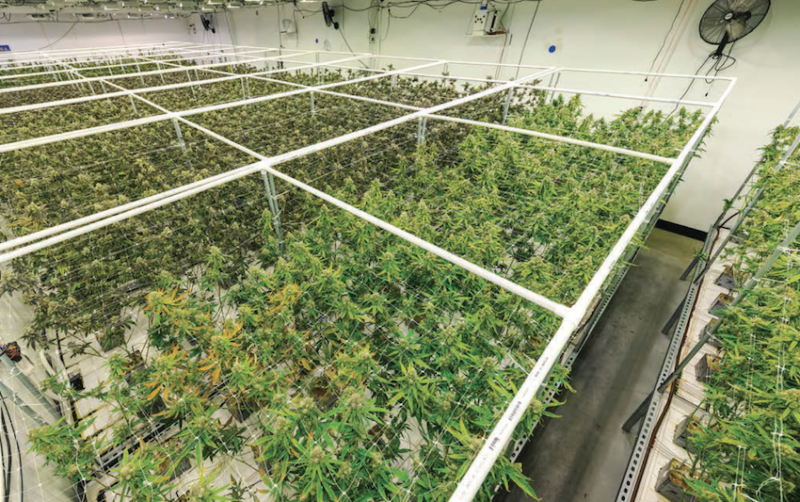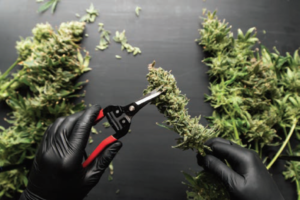
Worker Safety in the Cannabis Industry
As technology and industry advancements extend the season for growers, workers spend more hours doing repetitive work that increases the risk of injury. With cannabis cultivation still federally illegal, knowledge of industry-wide regulations and best practices is lacking, said Alex Hearding, chief risk management officer for the National Cannabis Risk Management Association (NCRMA).
The NCRMA, founded in 2018, is a Pittsburgh-based non-profit organization that provides risk management education, support and expertise to the cannabis industry. Hearding has legally cultivated marijuana as a medical caregiver and as a facility manager in a licensed greenhouse.
The NCRMA is working on not only educating the cannabis industry on injury prevention and safety, but also bringing awareness to standards that can be tailored to cannabis or standards created by states with long-established cannabis industries, like the “Guide to Worker Safety and Health in the Marijuana Industry” report issued in Colorado.
“These rules and standards aren’t really adopted immediately because there’s no template about how to do this,” Hearding says. “Most businesses just don’t know where to find it. If you’re a safety guy in another industry, that framework is there. That’s what this industry doesn’t have. What we’ve created is a full, world-class safety program where we can help companies develop safety policy, emergency action plans, PPE assessments, fire prevention, energy control, respiratory protection program, hearing conservation plans, etc.”
Most common injuries
The most common injuries seen in the cannabis industry are caused by biological or chemical hazards such as contact with pesticides, disinfectants, volatile organic compounds, and physical hazards such as noise exposure and ergonomics, according to Pinnacol Assurance, a Colorado-based compensation insurance carrier.
Hearding references a report issued by Pinnacol as a starting point on analyzing preventable injuries. The report analyzed claim data from Colorado workers in 2018 and found the five most common injury causes were:
- Strain
- Cut
- Fall or slip
- Struck by (being hit by something)
- Strike (person hitting something)
The most common body parts injured were fingers, hands, lower back, eyes and knees, according to the report. Pinnacol’s director of safety services, Jim McMillen, noted in a news release a concerning amount of “foreign body in eyes” type of injury.
“Eye injuries are quite common in the cannabis industry and are very easily preventable with a small investment in eye protection (safety glasses) and a plan to enforce their use. Severe eye injuries can cause vision loss, blindness and other long-term issues.” The average cost of an eye injury is almost $2,000, according to Pinnacol data.

Education
In June 2020, the NCRMA introduced NCRMAcademy, a collection of courses focusing on the prevention of workplace injuries in the cannabis industry. The goal of the courses is to fill a knowledge gap, helping management create safety protocol and ultimately helping the industry become a safer place for workers. All courses are available to watch on-demand.
NCRMA kicked off the NCRMAcademy with a course on sanitation and hygiene, focused on workers and product safety.
“With hygiene and sanitation, there’s pathogens we have to be careful about. But we also want to keep the product safe and there is a significant issue with contamination of the product — a lot of yeast, mold and spores,” Hearding says. “It really comes down to the best control a facility can have: a clean workplace, sanitizing and having a very simple, repeatable cleaning policy in practice, which isn’t really as common as you’d hope in the industry.”
The next four courses focus on ergonomics, featuring Chris Hughes, a professor of physical therapy and biomechanics:
- Introduction to Cannabis Ergonomics: Worker rights, ergonomic hazards and repetitive motion injuries, hazard controls, ergonomic process for operations, developing an optimal workflow, and an introduction to best practices
- Prune Like a Pro: Practices with biomechanical analytics to avoid hazards and injuries while cannabis pruning
- Trim Like a Pro: Practices with biomechanical analytics to avoid hazards and injuries while trimming cannabis
- Lift Like a Pro: Practices with biomechanical analytics to prevent injuries while lifting in a cannabis work environment
Ergonomics is a unique hazard for the industry, with activities like pruning and trimming being particularly tedious, Hearding says.
“A typical day would be a 12-hour day just trimming and it causes repetitive injuries like carpal tunnel, tendonitis, limiting range of motion,” Hearding says. “It can be really hard on the trimmer’s body. Indoor grows have boomed and so with these grows you can control the environment to where you have a perpetual harvest, which now requires a full-time trim crew. Now workers are doing this 40 hours a week. That’s obviously a change in the dynamics of how these workers typically were trimming, even though indoor growing has been going on for decades — just not at this scale.”
The ergonomics courses also introduce regulations from the Occupational Safety and Health Administration (OSHA), which Hearding said many in the industry aren’t aware apply to cannabis cultivation.
“[Workers are] covered by OSHA, which has a general duty clause that covers every worker in America; where owners must protect workers from injury,” Hearding says. “There’s also rights to report injuries and anti-retaliation rules where [companies] have to provide the workers with information on how to report injuries and cannot influence them not to report injuries in any way.”
NCRMA is also working with Hughes to create safety posters, ranging from ways to improve posture and stretches to safety precautions related to pesticides and injury prevention, that can be placed throughout cannabis cultivation facilities.
Injury Prevention Resources
• Colorado “Guide to Worker Safety and Health in the Marijuana Industry”









